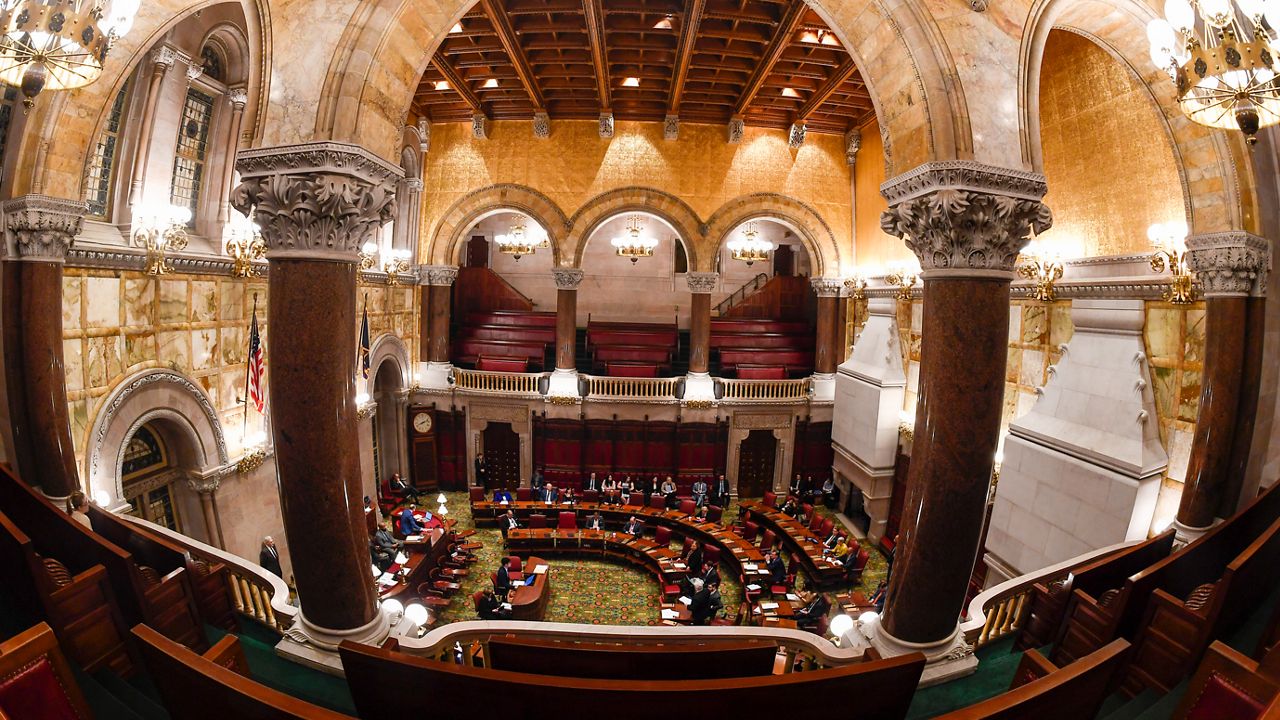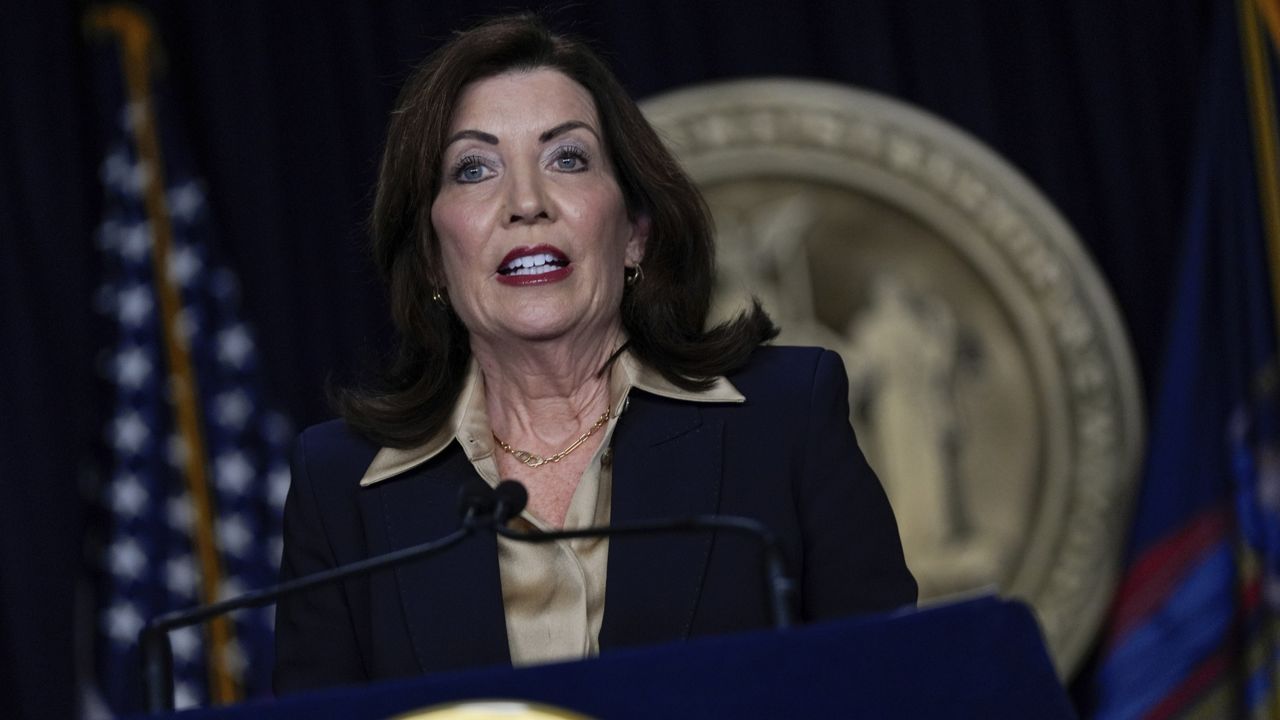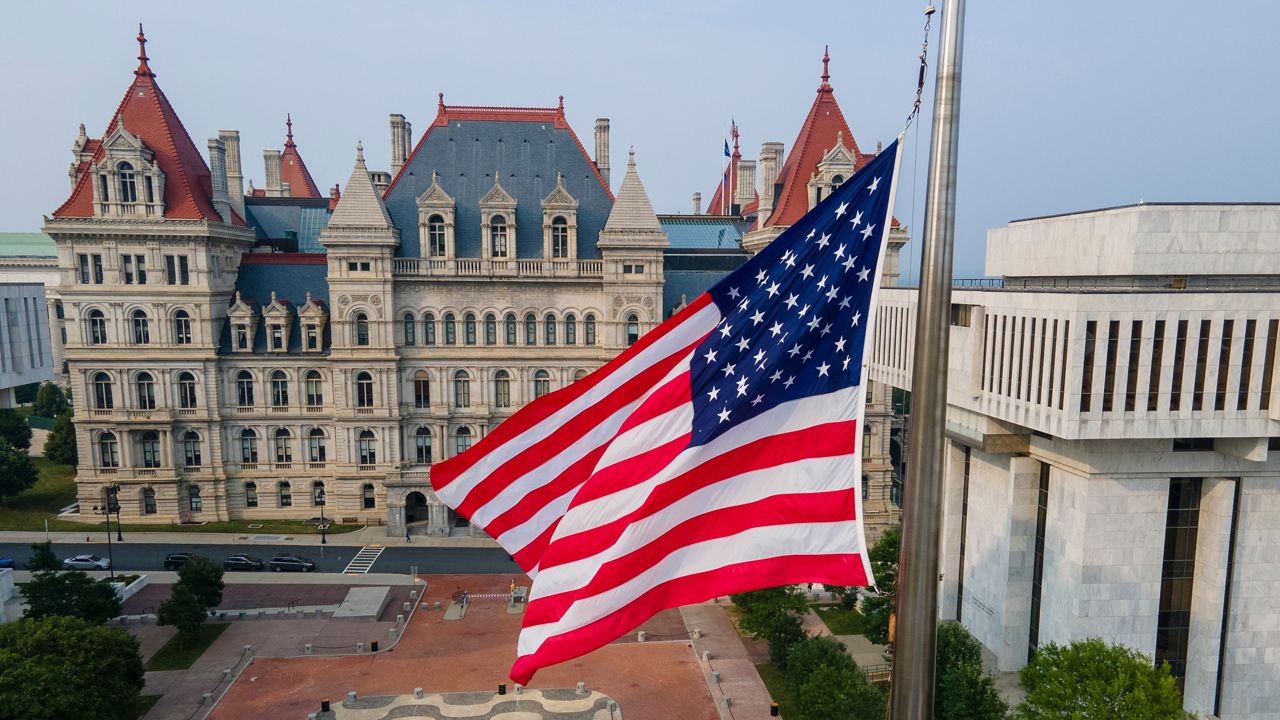New calculations from the state Division of the Budget show that New York will have a cumulative budget gap of $14.3 billion by the year 2028. The agency held what it calls s "quick start" budget meeting Friday afternoon.
The meeting gathers representatives from the state Division of Budget, the state Senate and Assembly and state Comptroller’s office to compare projections.
All three estimated that the state’s costs for school aid, Medicaid and other expenses will total over $139 billion next year, while the budget division projected all funds would total more than $241 billion, a 0.5% increase over last year.
Higher than expected receipts mean New York’s $2.3 billion budget gap for 2025 has been slashed to $1 billion. The state is staring down a $6.2 billion hole in 2027 and a $7.1 billion gap in 2028.
Budget Director Blake Washington stressed that ballooning Medicaid costs continue to drive out-year gaps. He told reporters after the meeting that it was an important step in setting the tone as next legislative session looms.
“We have a few months to go before we release the governor’s executive budget, and a lot of these revenue forecasts, real time data, that will all be incorporated,” he said.
Along with MTA concerns, Washington acknowledged that uncertainty over the shift in power in Washington is a reality, with bigger question marks on some programs than others.
“When I think of the Medicaid program, when I think of assistance to our public schools, those are things that come top of mind,” he said.
With a healthy $21.6 billion in the state’s reserves, NYPIRG Executive Director Blair Horner said following Election Day, that uncertainty is a reality the state must face.
“The division of the budget and the governor tend to approach budgets in a more conservative manner, and I think they are going to be increasing the possibility for financial risk,” he said.
On the other hand, Horner emphasized that the state’s sunnier than initially anticipated fiscal state this year is thanks, in large part, to increased tax receipts, which could continue.
“Wall Street is cooking, bonuses are bigger, tax revenues go up in New York, so do they offset what’s happening in terms of fiscal policy down in Washington? Who knows,” he said.
Another big question mark is the outcome of the state’s study of the Foundation Aid formula currently being conducted by the Rockefeller Institute.
When it is released in December, the state Division of Budget will have a little over a month to parse through the recommendations.
“We obviously have a financial plan to run, but putting all of those things together, figuring out what the right mix is, what can you solve for in the near term? What do you need to solve for in the long term?” Washington said.












